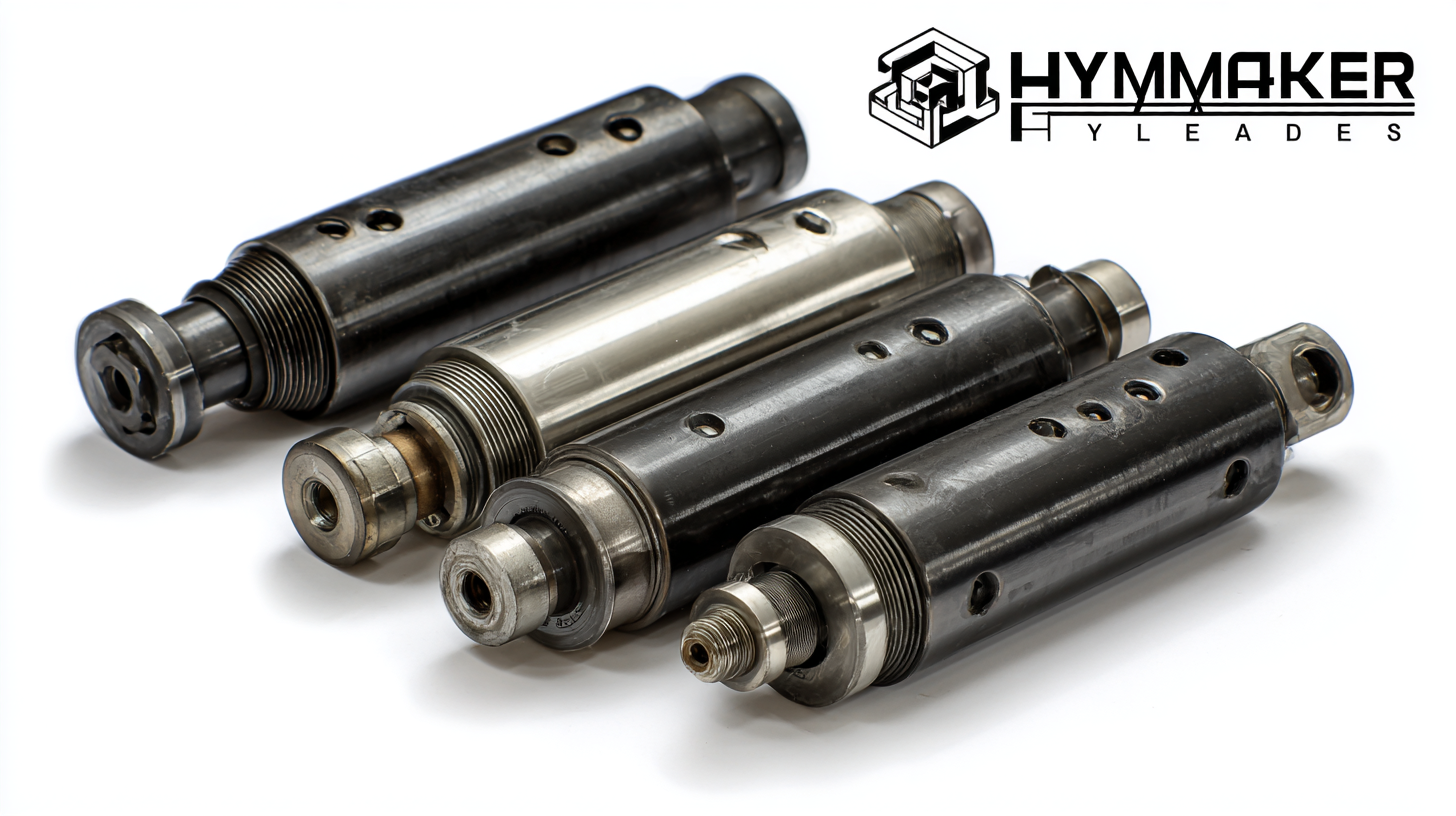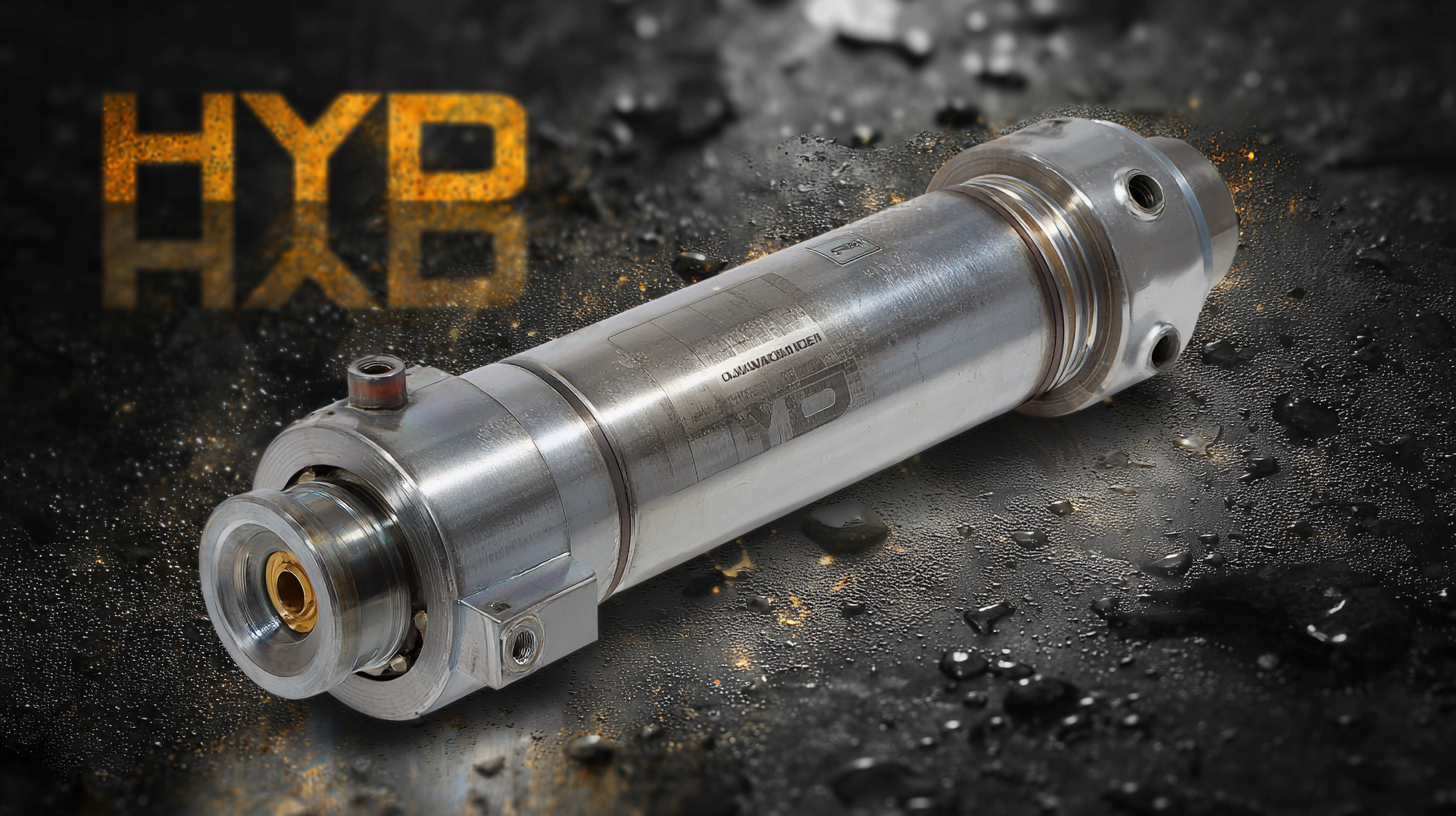The aftermarket hydraulic cylinders sector has witnessed significant advancements and innovations, yet it grapples with various industry production standards problems that hinder optimal performance and reliability. According to a recent market analysis by ResearchAndMarkets, the global hydraulic cylinder market is anticipated to grow at a CAGR of 5.4% from 2021 to 2026, driven by increasing demand across construction, agriculture, and manufacturing industries. However, discrepancies in quality and compliance with evolving regulations pose challenges for manufacturers and users alike. This blog will explore innovative alternatives for aftermarket hydraulic cylinders that promise to address these critical issues, enhancing efficiency and sustainability while meeting stringent industry standards. By delving into the latest technologies and practices, we aim to illuminate viable solutions that not only resolve existing problems but also set the stage for a more robust aftermarket hydraulic cylinder industry.

When considering aftermarket hydraulic cylinders, it is essential to understand both their benefits and challenges. One of the primary advantages is cost-effectiveness. Aftermarket cylinders often provide similar quality to OEM parts at a fraction of the price, making them an attractive option for businesses looking to manage expenses. Additionally, many aftermarket manufacturers offer customizable options, allowing companies to tailor their hydraulic solutions to meet specific operational requirements.
However, it's crucial to be aware of the challenges that come with choosing aftermarket products. The variance in quality across manufacturers can pose risks, as lower-quality cylinders may lead to premature failure and increased downtime. To mitigate this risk, research is vital. **Tip: Always verify the reputation of the aftermarket supplier and check for customer reviews to ensure that the products meet industry standards.** Furthermore, compatibility with your existing systems should be carefully assessed to avoid installation issues. **Tip: Consult with a hydraulic specialist to determine the specifications necessary for your equipment to ensure a seamless integration.** By being informed and proactive, you can leverage the advantages of aftermarket hydraulic cylinders while minimizing potential drawbacks.

When faced with malfunctioning hydraulic cylinders, a common dilemma arises: should one repair or replace them? Both options come with their own sets of advantages and challenges, making it essential to analyze cost implications carefully. Repairing hydraulic cylinders often presents a lower immediate expense, as it typically involves fixing specific issues rather than overhauling the entire unit. For those on a tight budget or operating older equipment, this approach can seem appealing. However, it is crucial to consider the long-term effects, as frequent repairs may lead to ongoing costs that can accumulate over time.
On the other hand, replacing hydraulic cylinders can appear more costly upfront but may prove to be a more economical choice in the long run. Newer models often come with improved technology, greater efficiency, and warranties that repair options lack. Additionally, investing in new hydraulic cylinders can enhance the overall performance of machinery and minimize the need for future repairs. Therefore, while the initial financial layout for replacement is higher, it could lead to significant savings and productivity improvements in the years to come. Ultimately, the decision should weigh both immediate costs and long-term value to ensure an optimal choice for any operation.
| Criteria | Repairing ($) | Replacing ($) | Time Required (Days) | Longevity (Years) |
|---|---|---|---|---|
| Cylinder Type A | 300 | 800 | 5 | 10 |
| Cylinder Type B | 250 | 750 | 4 | 9 |
| Cylinder Type C | 400 | 900 | 7 | 12 |
| Cylinder Type D | 350 | 850 | 6 | 11 |
The hydraulic cylinder design landscape is undergoing a transformative shift with the advent of innovative materials and technologies. Recent advancements highlight the exploration of lightweight materials, particularly carbon fiber composites, which promise to reduce the weight of hydraulic components significantly. As the industry looks to enhance efficiency, reports suggest that adopting lightweight hydraulics can lead to improved performance across various sectors, including construction and automotive, by facilitating easier maneuverability and better fuel efficiency.
One significant trend in hydraulic development is the incorporation of soft, flexible materials into piston designs. These innovative mechanisms utilize compressible structures that enhance adaptability and performance under varying operating conditions, thus improving durability and prolonging service life. Furthermore, the exploration of alternative fluids and sealing technologies is crucial, as manufacturers are now challenged to develop seals capable of withstanding aggressive environments and new fluid types.
**Tips:** When looking to upgrade hydraulic systems, consider materials that not only enhance performance but also reduce weight. Always stay informed about new sealing technologies, as they can significantly impact the longevity and efficiency of hydraulic cylinders. Additionally, keep an eye on advancements in additive manufacturing which can lead to pioneering designs tailored to specific hydraulic needs.
When it comes to selecting the right aftermarket hydraulic cylinder, a methodical approach can lead to significant operational efficiencies. According to a recent study by the International Fluid Power Association, a well-chosen hydraulic cylinder can enhance machine performance by up to 30%, reducing downtime and increasing productivity. It is essential to start by evaluating the specific requirements of your application, including load capacity, stroke length, and environmental conditions. These factors play a crucial role in determining the type of cylinder that best meets your needs.
Another vital consideration is the material and construction of the cylinder. A report from the Hydraulic Institute indicates that cylinders made from high-strength materials can withstand greater pressures and extend service life by 20-50%. Additionally, look for aftermarket suppliers that provide comprehensive product specifications and certifications, ensuring compatibility with existing systems. By following these steps and leveraging industry insights, you can make an informed selection that maximizes the performance of your hydraulic systems.
Maintaining hydraulic cylinders is crucial for ensuring optimal performance and longevity in various applications. Regular maintenance can significantly reduce downtime and repair costs, enhancing the efficiency of hydraulic systems. One fundamental aspect of maintenance is to routinely check for leaks, as even minor leakages can lead to substantial fluid losses and impact the overall functionality. Additionally, keeping the hydraulic fluid clean and at the appropriate level is vital, as contaminated fluid can cause wear and tear on cylinder components.
Another key maintenance tip involves inspecting seals and bearings regularly. Worn-out seals can allow fluid to escape, undermining the system's pressure capabilities. Replacing these seals at the first signs of wear can prevent more extensive damage and costly repairs. Moreover, using the correct hydraulic fluid based on the manufacturer's specifications will not only maximize performance but also ensure that the hydraulic cylinders operate smoothly under varying conditions. Staying proactive with these maintenance practices will ultimately lead to enhanced performance and reliability of hydraulic cylinders.
